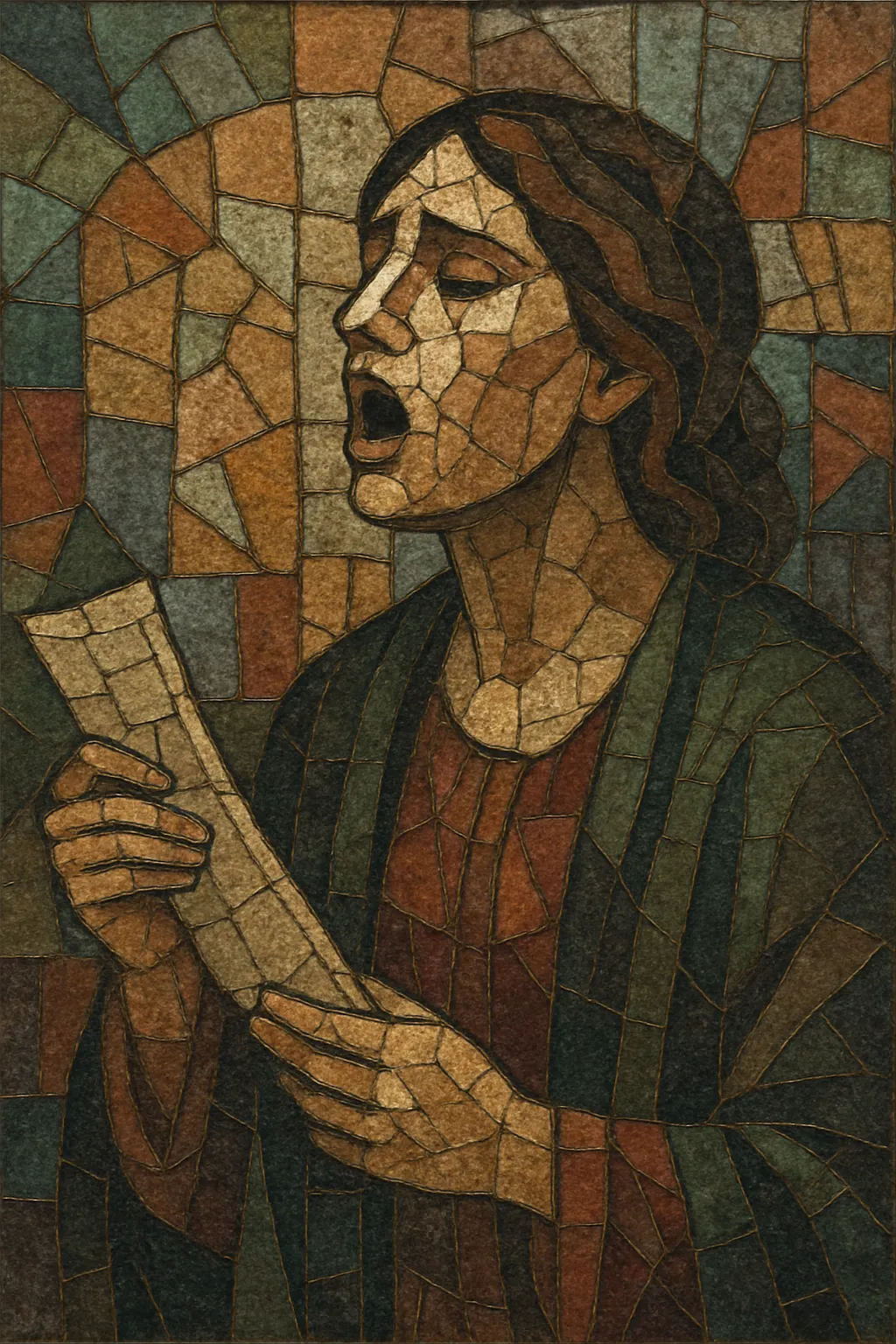
Bocet is a Romanian ritual lament traditionally performed at wakes and funerals by female professional mourners known as bocitoare. It is an a cappella vocal form whose purpose is to express grief, honor the deceased, and guide their passage, functioning as both a personal outpouring and a communal act of mourning.
Musically, bocet is characterized by free rhythm (parlando-rubato), a predominantly descending melodic motion, narrow ambitus, and intense melisma with sob-like ornaments, glottal breaks, and vocables (such as "vai" and "of"). The delivery favors a raw, crying timbre and microtonal inflections typical of regional Romanian folk practice. Texts are improvised or semi-improvised in the second person, addressing the departed, recounting their life and relationships, and expressing the survivors’ pain within a ritual framework.
Bocet (plural: bocete) is a Romanian funerary lament whose roots extend to pre-Christian mourning practices but which became closely entwined with Orthodox customs. Performed predominantly by women (bocitoare), it occupies a central place in village ritual life, providing structure and expression to communal grief.
The stylistic traits of bocet—free rhythm, melismatic declamation, descending cadences, and crying timbre—are consistent with a broader Balkan lament tradition while remaining distinctly Romanian in language, imagery, and local modal habits. Over centuries, bocet coexisted with church observances; while not liturgical, it often occurred alongside Orthodox rites and absorbed aspects of chant aesthetics through proximity and shared sensibilities.
From the late 19th and early 20th centuries, Romanian and Central European ethnographers began documenting bocete in regions such as Maramureș, Oltenia, Banat, and Transylvania. Field recordings and transcriptions captured the genre’s improvisatory nature and its formulaic poetic openings and closings. Throughout the 20th century, archivists and folklorists preserved numerous variants, and a few prominent folk interpreters occasionally presented stylized laments on stage or record, keeping the practice in public awareness.
While urbanization and social change have reduced the prevalence of professional bocitoare, the form continues in rural communities and appears in ethnographic archives, museum programs, and selected concert contexts. Modern avant-folk and experimental vocalists have drawn inspiration from bocet’s timbre, free rhythm, and emotive delivery, reframing its techniques outside the funerary setting while acknowledging its ritual origins.
Treat bocet as a ritual lament intended for a wake or funeral setting. Performance is typically solo, a cappella, and addressed directly to the deceased, blending personal memory with communal grief.
Use a narrow range (often within a 4th or 5th) with predominantly descending phrases. Favor parlando-rubato delivery, letting natural speech contours guide the melody. Employ melismas, sob-like ornaments, and occasional microtonal inflections to intensify expression. Cadences should feel resigned or falling, reflecting the gravity of the moment.
Avoid strict meter. Phrase lengths are flexible and responsive to breath and emotion. Structure the lament in short, quasi-strophic lines with formulaic openings (invoking the deceased) and closings (blessing or farewell). Leave space between lines for audible weeping or communal responses.
Improvise or semi-improvise lyrics in the second person, addressing the deceased by name or kinship. Incorporate familial roles, notable life events, and local nature imagery (roads, forests, rivers) as metaphors for departure and remembrance. Use vocables (e.g., "vai," "of") to bridge phrases and convey sobbing affect.
Adopt a raw, crying vocal tone with controlled breaks, sighs, and keening. Dynamic surges can crest on emotionally charged words before tapering into softer, falling lines. Maintain sincerity and restraint; technique serves the ritual’s emotional truth rather than display.
Perform unaccompanied. If any sonic support is used, keep it minimal (a distant bourdon-like hum from attendees) so the voice remains central. Choose a resonant room where words and tears are clearly heard.
If adapting elements for concert or study, clearly contextualize the ritual origins, and avoid sensationalizing grief. Prioritize ethical sourcing, community consent, and faithful representation when drawing on field materials.

